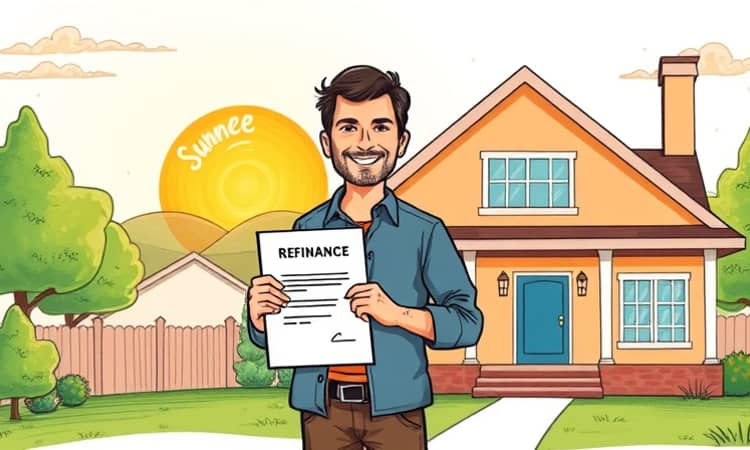Refinancing your existing loans can be a transformative step toward achieving long-term financial goals and plans. Whether you want to lower your interest rate, reduce monthly payments, or tap into home equity, this guide will walk you through every critical decision and action.
Understanding the Power of Refinancing
At its core, refinancing is the process of replacing an existing loan with a new one, ideally under improved terms. Homeowners commonly refinance to secure a lower interest rate, adjust the repayment schedule, or remove private mortgage insurance (PMI). Beyond mortgages, auto loans and student loans can also be refinanced to reduce overall debt costs.
By seizing current market rates are favorable, you can lock in a rate that aligns with your evolving financial objectives. However, timing and preparation are essential to ensure the process delivers the benefits you expect without unexpected costs.
When to Take the Plunge
Knowing the ideal moment to refinance can save you thousands. Here are the most compelling scenarios:
- Falling interest rates: If market rates drop by at least 0.5% to 1% below your current loan rate, refinancing often makes sense.
- Improved credit score: A higher credit score since your original loan can qualify you for better rates and terms.
- Change in financial goals: You may wish to shorten your loan term, switch loan types, or access cash through a cash-out refinance.
- Home value increases: Significant equity growth can help you eliminate PMI or secure a larger cash-out amount.
Each situation requires careful consideration. Calculate whether the present value of significant monthly payment reductions outweighs upfront expenses before committing.
Types of Refinancing Explained
Understanding the various refinancing options ensures you choose the strategy best suited for your goals. Four primary types include:
- Rate-and-term refinance: Adjusts your interest rate, loan term, or both, without substantially changing your principal balance.
- Cash-out refinance: Increases your loan amount to provide cash based on your home equity.
- Cash-in refinance: Allows you to pay down the loan balance at closing, often to avoid PMI or secure lower rates.
- Streamline refinance: Simplifies paperwork for government-backed loans like FHA or VA, provided the new loan benefits the borrower.
Mapping Your Refinance Journey: Step by Step
Embarking on a refinance requires a systematic approach. Follow these key steps for a comprehensive refinance plan tailored to your needs:
- Set a clear refinance goal: Identify your primary objective—lower payments, shorter term, cash access, or PMI removal.
- Check your financial situation: Review credit scores, debt obligations, income, and home equity. Ensure you meet lender criteria.
- Research and compare lenders: Gather multiple lender quotes and offers to find the most competitive rates and terms.
- Apply for the new loan: Submit documentation such as pay stubs, tax returns, W-2s, and asset statements.
- Underwriting and appraisal: Lenders verify your financials while an appraisal confirms property value and loan-to-value ratio.
- Review loan estimates: Compare closing costs, monthly payments, and calculate your break-even point (typically 3–6% of loan amount).
- Close and refinance: Sign final documents, pay closing costs, and allow rescission if applicable before your new loan replaces the old one.
Weighing the Numbers: Costs and Break-even Analysis
Refinancing carries certain expenses. Mortgages often incur closing costs of 3–6% of the loan amount, including appraisal fees, origination charges, and title insurance. Calculating your break-even point is crucial—it tells you how many months of savings it takes to recoup these initial outlays.
For example, a $300,000 mortgage with 4.5% interest reduced to 3.5% might save $150 monthly. If closing costs total $9,000 (3%), the break-even point would be 60 months ($9,000 ÷ $150). If you plan to stay in your home longer than five years, you’ll likely net a positive return.
Be mindful of potential downsides: extended loan terms can increase total interest paid, and a falling property market could put you underwater. Always confirm that your potential savings outweigh upfront costs before making a decision.
Preparing for a Smooth Closing
A seamless closing depends on organized preparation. Ensure you have:
- Recent pay stubs, W-2s, and two years of tax returns
- Bank and investment account statements
- Current mortgage statements and homeowners insurance declarations
Avoid major financial changes—such as opening new credit cards—until after closing. Lenders often perform a final credit check, and any large purchases or new debt could jeopardize your approval.
If you prefer familiarity, discuss refinancing with your existing lender—they may offer loyalty incentives. Yet, don’t overlook competitive offers from new lenders, and always review the “Closing Disclosure” against the initial loan estimate for any surprises.
Conclusion: Making the Right Decision
Refinancing can be an empowering financial tool when approached with diligence and a clear plan. Begin with precise goals, conduct thorough research, and maintain organized documentation. By engaging in the steady income verification process and leveraging well-prepared documentation and accurate figures, you position yourself to secure the best possible terms and savings.
Ultimately, the key to successful refinancing is balance: ensuring that the short-term effort and costs align with your long-term vision. With careful analysis and expert guidance, you can transform your existing loans into powerful stepping stones toward financial freedom and stability.
References
- https://www.rocketmortgage.com/learn/how-does-refinancing-work
- https://www.citizensbank.com/learning/refinance-process.aspx
- https://www.bankrate.com/mortgages/how-does-refinancing-a-mortgage-work/
- https://themortgagereports.com/75903/mortgage-refinance-process-timeline
- https://www.nerdwallet.com/article/mortgages/how-to-refinance-your-mortgage
- https://www.commercebank.com/personal/ideas-and-tips/2024/refinancing-your-mortgage-in-6-simple-steps
- https://www.comerica.com/insights/personal-finance/refinancing-your-mortgage-loans-101.html
- https://www.newamericanfunding.com/learning-center/homeowners/refinancing-your-mortgage-a-homeowners-step-by-step-guide-to-refinancing-your-loan/














